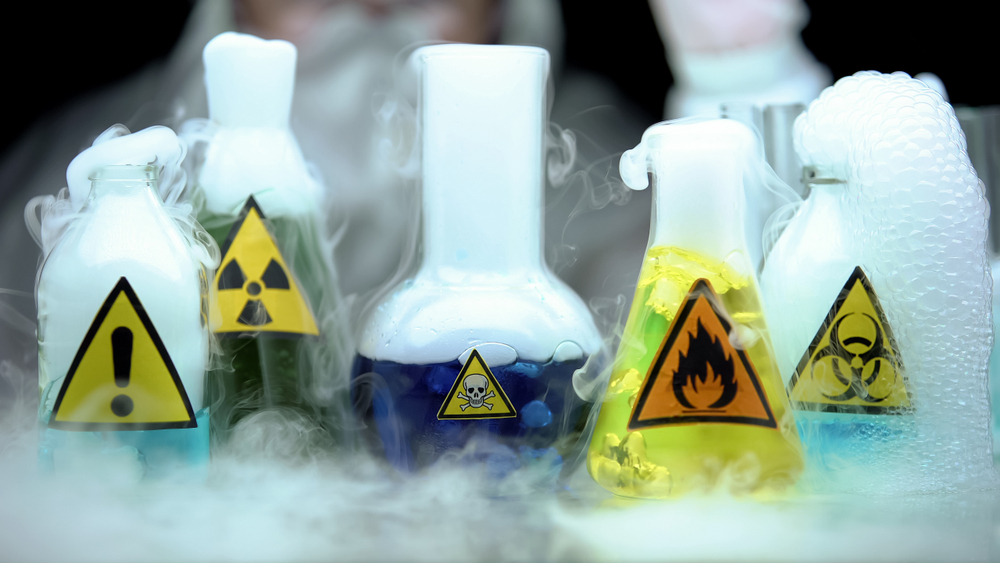
Chemistry Lab Cabinets: A Buyer’s Guide to Safety and Storage
Chemistry laboratories are dynamic environments where safety and organization are paramount. One of the key components of a safe and well-organized lab is the storage of chemicals and materials. Chemical storage cabinets play a critical role in ensuring the safe storage and handling of chemicals, protecting both laboratory personnel and the environment from potential hazards.
This buyer’s guide aims to provide an overview of the many aspects to consider when selecting chemistry lab cabinets. We’ll explore lab and chemical types, safety standards, segregation, and ultimately, chemical laboratory cabinet requirements to meet the safety, capacity, and design requirements.
Types of Research
For safe storage of chemicals in a chemistry laboratory, the type of research done plays a significant role in the choice of storage cabinets.
In chemistry labs, various types of research are conducted, and it is crucial to understand which chemical substances, reactions, and properties apply to the lab being furnished. Here are a few examples of the diverse research areas within chemistry labs, and the chemicals and examples of the substances they use.
- Synthetic Chemistry: The synthesis of new compounds, materials, or molecules for various applications, such as pharmaceuticals, polymers, and catalysts. Synthetic chemistry lab cabinets may hold acetone, methanol, sodium hydroxide, and sulfuric acid.
- Analytical Chemistry: The analysis of chemical compounds to determine their composition, structure, and properties. This can include techniques such as chromatography, spectroscopy, and mass spectrometry. Solvents such as methanol, acetonitrile, and water reagents such as EDTA and HCl are typically stored in analytical chemistry lab cabinets.
- Physical Chemistry: The study of the physical properties and behavior of chemical systems, including thermodynamics, kinetics, and quantum mechanics. Safe storage in chemistry lab cabinets would be required for ethanol, hydrochloric acid, and sodium chloride.
- Organic Chemistry: The study of carbon-containing compounds, including their synthesis, structure, and reactions. Organic chemistry is essential in drug discovery, materials science, and biochemistry. Organic chemistry lab cabinets must hold chemicals that include benzene, ethanol, acetone, and toluene.
- Inorganic Chemistry: The study of inorganic compounds, including metals and minerals. Inorganic chemistry plays a role in materials science, catalysis, and environmental chemistry, and sodium chloride, sulfuric acid, silver nitrate, and iron oxide will need safe storage in inorganic chemistry lab cabinets.
- Biochemistry: The study of chemical processes and substances that occur within living organisms. Biochemistry is important in understanding diseases, drug interactions, and metabolic pathways. Chemistry lab cabinets in this field have special requirements to ensure the safe storage of pathogens, cell cultures, and genetically modified organisms. Also, radioactive materials, toxic substances, flammable solvents like alcohol and ether, corrosives, and carcinogens.
- Environmental Chemistry: The study of the chemical processes occurring in the environment, including air, water, and soil. Environmental chemistry is crucial for understanding pollution and developing remediation strategies. Dangerous substances in environmental chemistry labs include pesticides, heavy metals (e.g., lead, mercury), and hydrocarbons (e.g., benzene, toluene).
- Materials Chemistry: The study of the synthesis, structure, and properties of materials, including ceramics, polymers, and composites. Materials chemistry is important for developing new materials with specific properties for various applications. Materials chemistry lab cabinets must safely store polymers (e.g., polystyrene, polyethylene), ceramics (e.g., alumina, silica), and metals (e.g., iron, aluminum).
- Medicinal Chemistry: The design and synthesis of pharmaceutical compounds for use as drugs. Medicinal chemistry combines principles of organic chemistry and biochemistry to develop new drugs and improve existing ones. Researchers work with acetylsalicylic acid, ibuprofen, penicillin, and paracetamol.
- Surface Chemistry: The study of chemical reactions that occur at the interfaces of materials. Surface chemistry is important in catalysis, corrosion prevention, and materials science. Safe chemistry lab cabinets are required for surfactants (e.g., sodium dodecyl sulfate), catalysts (e.g., platinum, palladium), and metal oxides (e.g., titanium dioxide).
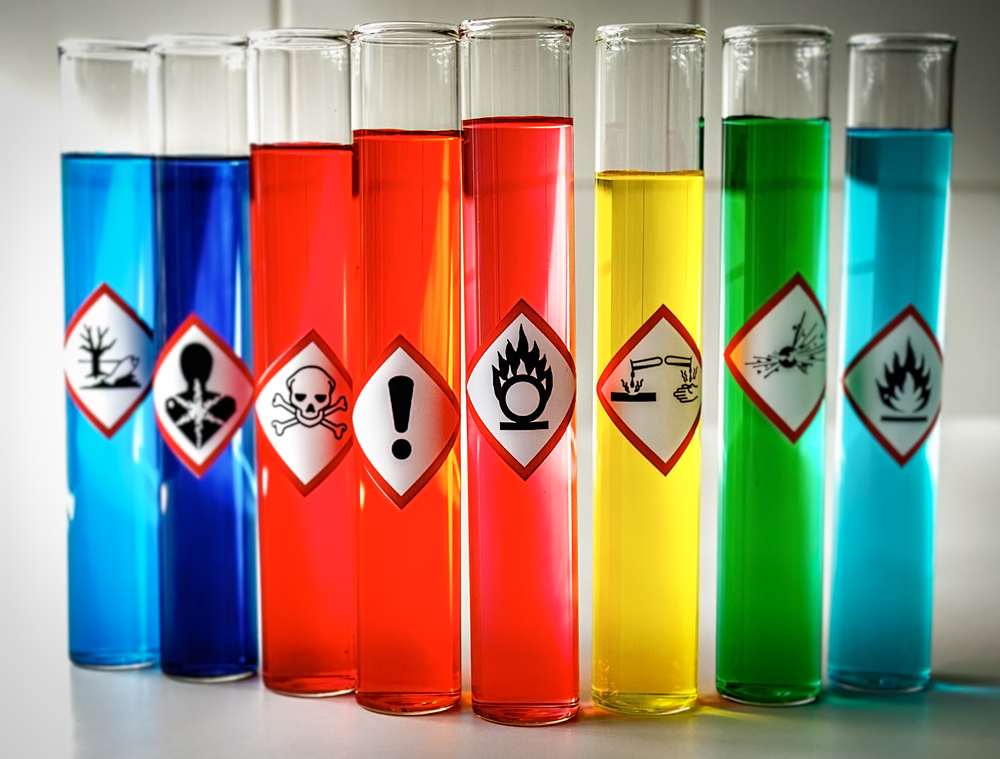
The specific chemicals used can vary depending on the research goals and protocols of each laboratory. Each area plays a crucial role in advancing scientific knowledge and developing new technologies for various industries.
These types of research often overlap, and interdisciplinary approaches are common in modern chemistry labs, and chemistry lab cabinets for safety might have to meet the standards for more than one class of hazard.
Hazard Classes
Chemicals found in a chemistry lab can be classified into several hazard classes based on their properties and potential risks. Understanding these hazard classes is important for selecting appropriate chemistry lab cabinets. Some common hazard classes include:
- Flammable Liquids: These are liquids with a flash point below 37.8 °C (100 °F) that can easily ignite and burn. Examples include ethanol, acetone, and gasoline.
- Corrosive Substances: These are chemicals that can cause severe damage to skin, eyes, and materials on contact. Examples include sulfuric acid and sodium hydroxide.
- Toxic Substances: These are chemicals that can cause harm or death when inhaled, ingested, or absorbed through the skin. Examples include mercury, lead, and some pesticides.
- Oxidizing Agents: These are chemicals that can cause other materials to burn or support combustion. Examples include hydrogen peroxide and potassium permanganate.
- Compressed Gases: These are gases stored under pressure that can pose a risk of explosion or asphyxiation. Examples include oxygen, nitrogen, and propane.
- Explosive Substances: These are chemicals that can undergo rapid chemical reactions with the release of gas, heat, and pressure. Examples include TNT and nitroglycerin.
- Reactive Substances: These are chemicals that can react violently with other chemicals or materials. Examples include sodium metal and peroxides.
- Carcinogens: These are chemicals that can cause cancer. Examples include benzene and asbestos.
- Mutagens: These are chemicals that can cause genetic mutations. Examples include certain dyes and pesticides.
- Teratogens: These are chemicals that can cause birth defects. Examples include thalidomide and some pesticides.
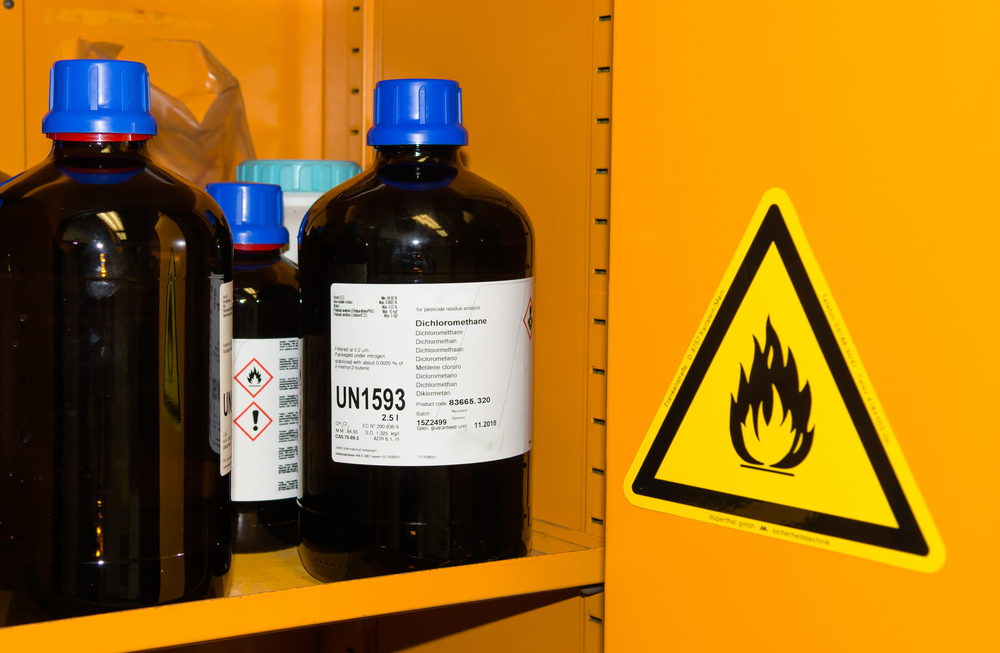
Compliance with Safety Codes for Chemical Storage
In a chemistry lab, it is crucial to comply with safety codes and regulations to ensure safe storage of chemicals. Before selecting chemistry lab cabinets, become familiar with applicable regulations because they will play a role in your choice of storage cabinet.
Some key safety codes to consider include:
- NFPA 45: This code of the National Fire Protection Association provides requirements for the storage, use, and handling of hazardous materials in laboratories.
- NFPA 30: This code provides guidelines for the safe storage, handling, and use of flammable and combustible liquids.
- OSHA 29 CFR 1910.1450: OSHA’s Laboratory Standard outlines specific requirements for handling hazardous chemicals in laboratories.
- Local Building Codes: Local regulations may have specific requirements for the storage of chemicals in laboratories.
- Segregation: Store chemicals according to compatibility to prevent reactions.
- Storage Containers: Use appropriate containers designed for chemical storage.
- Chemical Manufacturer’s Recommendations: Always follow the manufacturer’s instructions for the storage of specific chemicals.
- Safety Data Sheets (SDS): Review the SDS for each chemical to determine specific storage requirements, such as temperature and compatibility.
- Labeling: Ensure all chemicals are properly labeled with their contents, hazards, and storage requirements.
- Ventilation: Proper ventilation is essential to prevent the buildup of hazardous vapors.
- Training: Ensure all personnel are trained in safe handling and storage practices.
- Emergency Preparedness: Have a plan in place for responding to chemical spills or other emergencies.
It’s important to consult safety experts and review the specific regulations applicable to your location and lab setup to ensure compliance and promote a safe working environment.
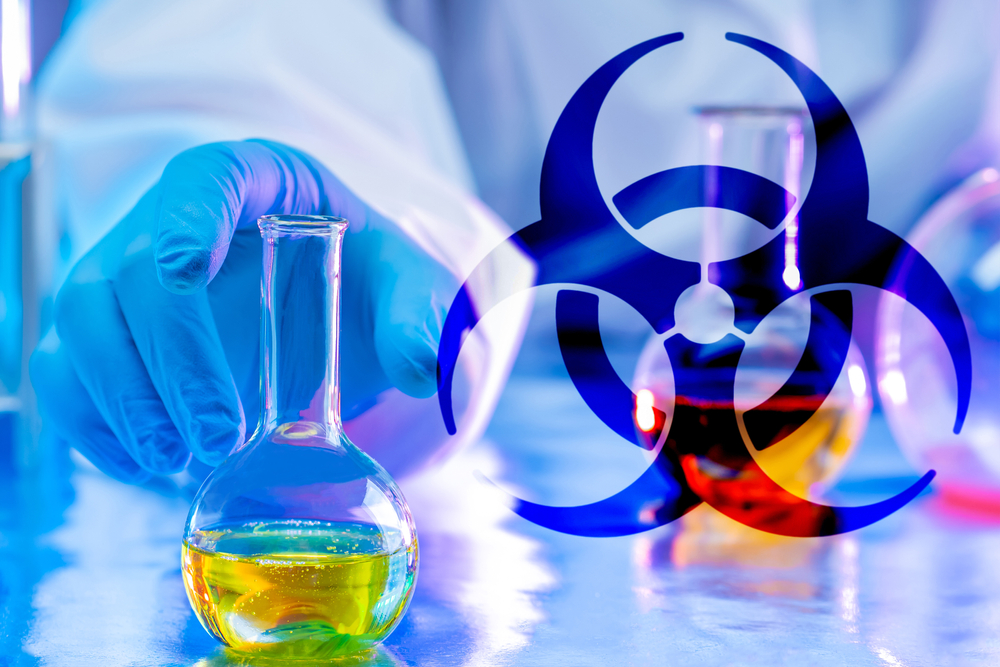
Guidelines for Safe Storage in Chemistry Lab Cabinets
The Scientific Equipment and Furniture Association (SEFA) is known for its standards and guidelines related to laboratory furniture and equipment, including cabinets.
It is wise to be aware of and understand the myriad of safety recommendations to ensure the selected chemistry lab cabinets can be accommodated in the available space while still meeting safety codes.
Here’s a summary of SEFA’s storage recommendations for various types of chemicals:
1. General Recommendations
- Store chemicals of the same hazard class together.
- Keep chemicals away from direct sunlight and heat sources.
- Corrosive chemicals should be stored in trays to contain spills.
- Label all chemicals with names, concentrations, and dates.
- Store hazardous chemicals below 60″ from the floor.
- Separate solid and liquid chemicals.
- Do not store chemicals under sinks or in fume hoods.
- Do not store flammable liquids in un-fire-rated refrigerators.
- Do not store chemicals and food in the same refrigerator.
- Use explosion-proof refrigerators for flammable liquids.
2. Acid Storage
- Store large bottles of acids on lower shelves.
- Store oxidizing acids separately from organic acids, flammables, and combustible materials.
- Store acids separately from bases and active metals.
- Store acids in chemical-resistant trays.
- Store acids separately if incompatible.
3. Base Storage
- Store bases and acids separately.
- Store large bottles of bases on lower shelves or in a corrosive cabinet.
- Store bases in chemical-resistant trays.
- Store bases separately if incompatible.
4. Flammable/Solvent Storage
- Follow NFPA guidelines for flammable liquid storage.
- Store flammables in approved enclosures.
- Use explosion-proof or intrinsically safe refrigerators for storing flammable liquids.
- Ground metal flammable storage cabinets.
5. Peroxide Forming Chemical Storage
- Store peroxide-forming chemicals in airtight containers in a dark, cool, and dry place.
- Dispose of peroxide-forming chemicals before the expected peroxide-formation date.
- Store peroxide-forming chemicals by compatibility.
- Store shock-sensitive and detonable materials in secondary containers.
6. Water Reactive Chemical Storage
- Store water-reactive chemicals in a cool and dry place.
- Store water-reactive chemicals by compatibility.
7. Oxidizer Storage
- Store oxidizers away from flammables, combustibles, and reducing agents.
- Store oxidizers by compatibility.
8. Toxic Compounds
- Store toxic compounds according to their nature.
- Post a “Poison Control Network” telephone number in the laboratory.
- Store toxins by compatibility.
It’s important to note that care must also be taken when disposing of materials, and separate waste containers should be used for each type of waste.
Segregation
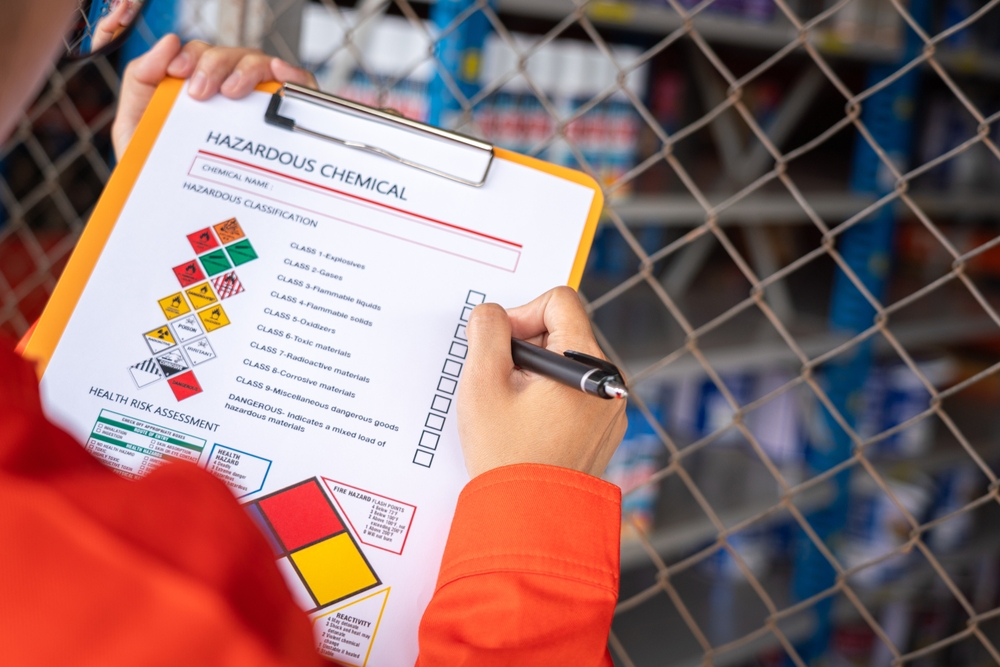
Segregating chemicals in storage cabinets is crucial for safety in a chemistry lab. It helps prevent chemical reactions that can lead to fires, explosions, or the release of toxic fumes. Here’s how to segregate chemicals when selecting appropriate chemistry lab cabinets:
- Chemical Compatibility: Group chemicals by their compatibility. Store chemicals that are compatible with each other together to avoid reactions. Consult chemical compatibility charts to determine which chemicals can be stored together safely.
- Separation by Hazard Class: Store chemicals according to their hazard class (e.g., flammable, corrosive, toxic). Keep flammable liquids in a separate cabinet from oxidizing agents to prevent fires.
- Storage Requirements: Some chemicals have specific storage requirements. For example, acids should be stored in cabinets designed for corrosive materials, while flammable liquids should be stored in cabinets with proper ventilation and grounding.
- Labeling: Clearly label storage cabinets with the types of chemicals stored inside and any specific storage requirements or hazards.
- Spill Containment: Use spill containment trays or secondary containment measures to contain spills and prevent them from spreading to other chemicals.
- Separate Storage Cabinets: Consider using separate storage cabinets for different hazard classes to minimize the risk of accidental mixing.
- Training: Ensure all lab personnel are trained in the proper storage and handling of chemicals and understand the importance of segregation.
By segregating chemicals appropriately, you can reduce the risk of accidents and create a safer working environment in your chemistry lab.
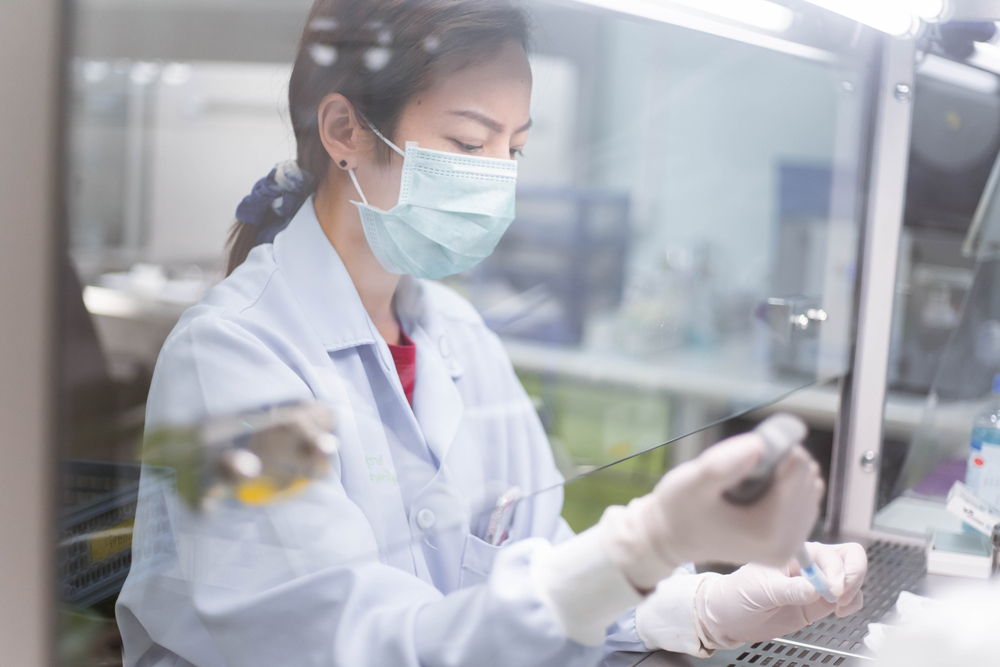
Chemistry Lab Cabinets for Storage Safety
All the safety aspects we’ve dealt with so far are important factors in selecting chemistry lab cabinets. Ultimately, you want your lab environment to have safe and secure storage without compromising workspace, functionality, and workflow.
To ensure that chemical storage cabinets comply with approved design, construction, and capacity standards, you should look for the following features:
- Material: As with workstations, casework, and other lab furniture, the laboratory cabinets should be made of suitable materials such as stainless steel, epoxy, polyethylene, or wood laminate, depending on the types of chemicals to be stored.
- Construction: The cabinet should be sturdy and well-constructed, with seams welded or riveted to prevent leaks and spills.
- Doors: Doors of the storage units should be self-closing with an automatic latch feature to prevent unauthorized access and contain spills.
- Ventilation: Cabinets should have appropriate ventilation to prevent the buildup of fumes and vapors.
- Labels: Cabinets should be labeled with the types of chemicals that can be stored inside and any specific storage requirements or hazards.
- Capacity: The cabinet should have sufficient capacity to store all chemicals safely, without overcrowding.
- Shelving: Adjustable shelves are preferable to accommodate different-sized containers and maximize storage space.
- Spill Containment: Cabinets should have spill containment trays or shelves to contain spills and prevent them from spreading.
- Fire Resistance: Cabinets should be fire-resistant to protect against fires. Look for cabinets that meet relevant fire safety standards.
- Compliance: Ensure that the cabinet complies with relevant regulatory standards, such as OSHA, NFPA, and local building codes.
By checking for these features, you can ensure that the chemical storage cabinets in your lab are designed and constructed to safely store chemicals and comply with approved standards.
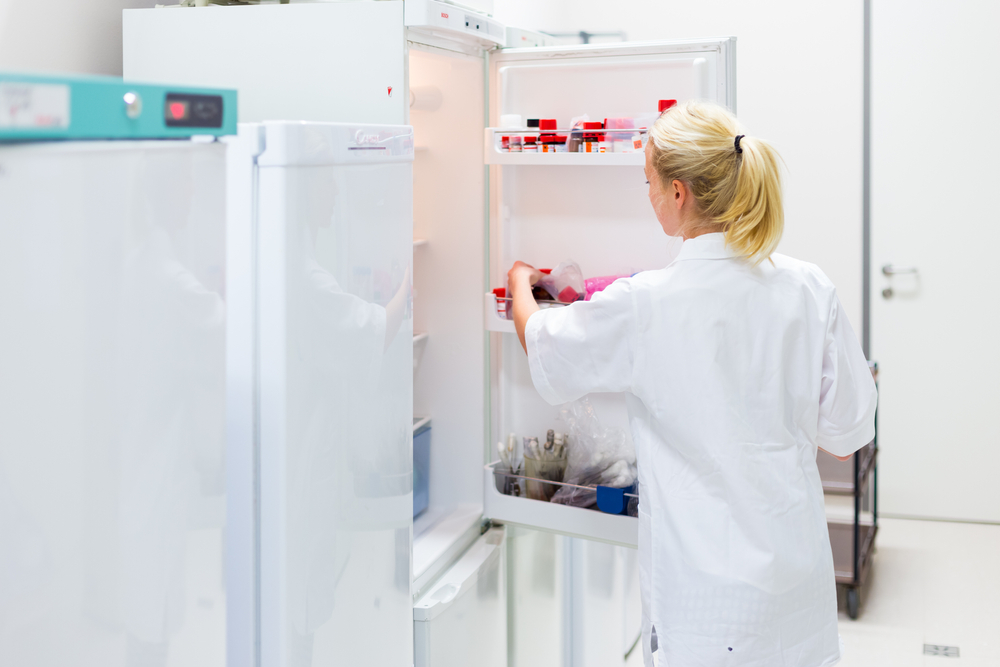
Conclusion
Selecting the right chemistry lab cabinets is essential for maintaining a safe and efficient laboratory environment. By considering factors such as material compatibility, ventilation, capacity, and compliance with safety standards, laboratory managers can ensure that their cabinets meet the requirements for storing chemicals safely. Investing in high-quality cabinets not only helps to protect laboratory personnel and the environment, but also contributes to the overall organization and efficiency of the laboratory.
It is worth noting that Genie Scientific, an accredited lab design company, can provide valuable guidance and support in laboratory design, engineering, manufacture, delivery, and installation of lab furniture. Whether you need to build out a multi-million dollar facility or purchase a single fume hood, Genie is there to serve, ship, and install nationwide.




